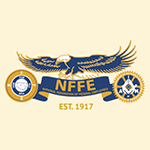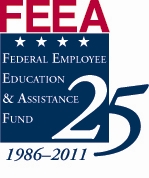
 During the summer of 1986, federal budgets were being cut, the federal workforce was being reduced and many elected officials were particularly critical of federal employees. It was not a “warm and fuzzy” time to be a fed. Until G. Jerry Shaw called Bob Tobias and invited him to lunch.
During the summer of 1986, federal budgets were being cut, the federal workforce was being reduced and many elected officials were particularly critical of federal employees. It was not a “warm and fuzzy” time to be a fed. Until G. Jerry Shaw called Bob Tobias and invited him to lunch.
Shaw was then a former attorney in the IRS Office of Chief Counsel, who had gone on to help found the Senior Executives Association. Tobias was the president of the National Treasury Employees Union. At the time, the two men had what Tobias describes as a “somewhat prickly” relationship, having been on opposite sides of the table in labor-management disputes at the IRS. But on that day, Shaw proposed setting up a new organization, with both management and unions on the board, to help provide a safety net for civilian feds and their families and Tobias thought it was an excellent idea. That lunch laid the groundwork for what became the Federal Employee Education and Assistance Fund (FEEA).
“I believed then and now that federal employees are a community of individuals who believe their work is in service to their country,” said Tobias. “As a community, they are willing to assist other members of their community in need. I wanted to be a force in facilitating and reinforcing the connection of federal employees to the federal employee community.”
The two men invited the National Council of Social Security Management Associations and the National Federation of Federal Employees to the table as well, and with the help of Steve Bauer and Jim Pierce (then presidents of those organizations, respectively), FEEA began serving civilian federal and postal employees. The board has expanded over the years to include the Federal Managers Association (1993), the National Active and Retired Federal Employees Association (1997), the American Federation of Government Employees (1999), the Federal Aviation Administration Managers Association (2003), the Professional Managers Association (2005), and Blacks In Government (2006).
In its first year, FEEA made just over $120,000 in no-interest loans and disaster grants to 137 employees and gave $100,000 in scholarships to 131 students. After 10 years, an aggregate of $1.2 million in emergency assistance had been provided to 2,800 feds and nearly $1.3 million in scholarships had been awarded to over 2,000 students.
And now, after 25 years of helping feds, FEEA has given more than $7.7 million in emergency no-interest loans and grants to over 13,000 federal employees and has provided over $10.2 million in scholarships to more than 8,000 students. Within those totals are grants made after major disasters like Hurricane Andrew (1992), the Oklahoma City bombing (1995), the 9/11 terrorist attacks (2001), and Hurricane Katrina (2005). There are scholarships for nearly 300 students who lost a parent in the Oklahoma City tragedy, the terrorist attacks on U.S. embassies in Africa (1998), and at the Pentagon on 9/11.
Also included are more than $500,000 in no-interest loans given in just the last year to federal employees suffering their own personal disasters, from flooding and fires to divorce, death in the family and unexpectedly high utility bills. And over $480,000 in individual scholarship awards to 450 of the best and brightest students within the federal family for the 2010-11 academic year.
FEEA’s programs have grown, but its mission remains the same: to assist civilian federal and postal employees whenever and wherever the need arises. The ability to continue helping federal families rests on FEEA’s capacity to continue raising the funds necessary to meet increasing needs.
Please show your support for FEEA’s 25-year tradition of federal employees helping federal employees by making a donation of $25 or more now. Thanks to a generous grant from the BlueCross/BlueShield Association the first $25,000 in individual donations during this campaign will be matched by BCBS, giving your donation twice the impact. Help FEEA reach its $100,000 goal and sustain the programs that matter most to federal families. Go to www.feea.org today and click the “Give Now” button. Your gift will truly make a difference.
